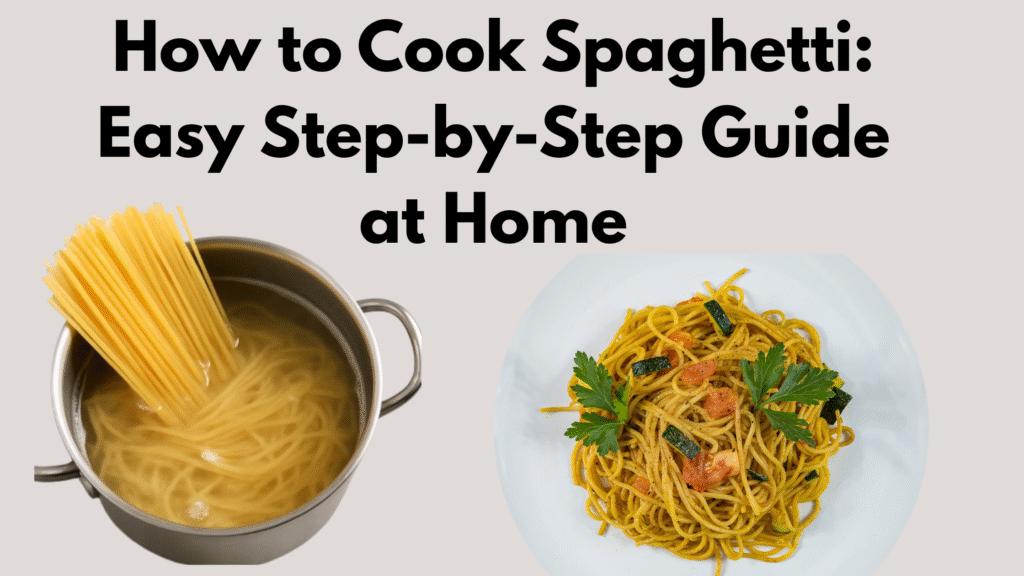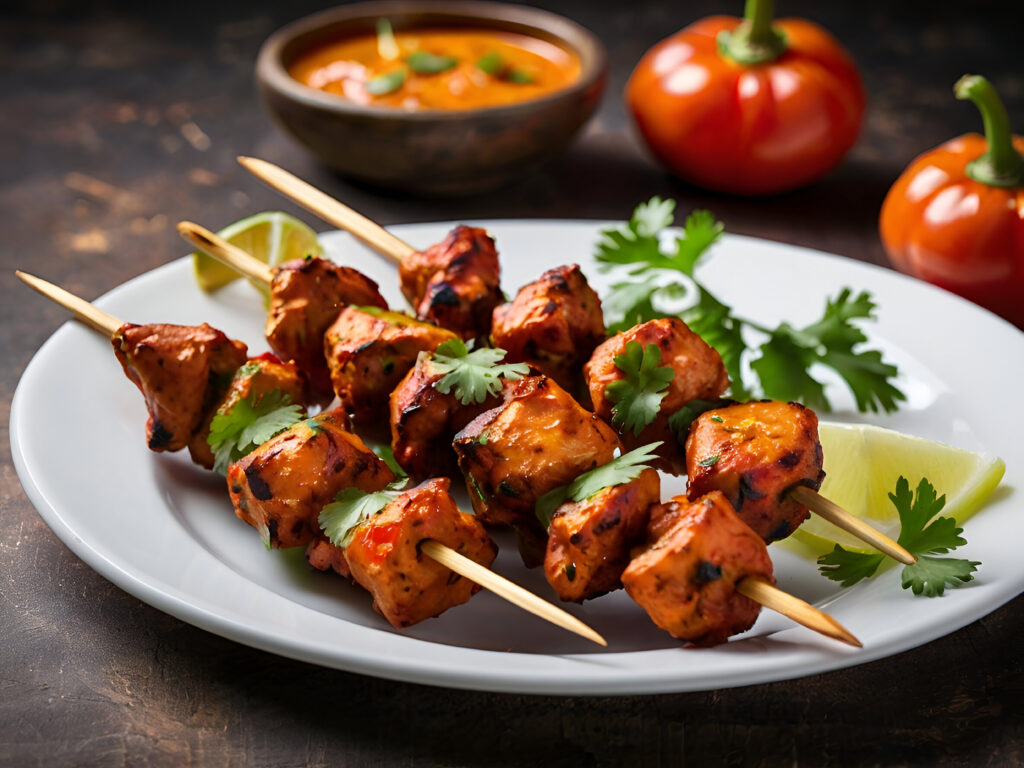
🍝 How to Cook Spaghetti Perfectly (ha is pr – just like that)
Crafting the ideal spaghetti dish takes simple ingredients—but attention makes it extraordinary. In this guide, you’ll learn each step: the who, what, when, and how. Even the phrase “ha is pr” can help you remember: heat water, add salt, introduce pasta, stir, perfect release. Let’s break it down.
1. Gather Your Tools & Ingredients
Tools you’ll need:
- A large stockpot (to give noodles room to move)
- A colander for draining
- A wooden spoon or pasta fork for stirring
- A measuring spoon for salt
Table of Contents
Ingredients per ~4 servings:
- 1 pound (≈450 g) dried spaghetti
- Water—at least 14 cups (about 3.5–4 liters), ideally 4–6 quarts
- Kosher or sea salt: about 2 tsp per quart (~1 tbsp per 4 quarts) so the water tastes like the sea
- Optional: olive oil—but only for plain pasta salad purpose, not in boiling water
2. Fill the Pot & Boil
Start with cold water, filling the pot generously—leave 1.5 inches at the top free. More water prevents sticking and keeps temperature steady.
Bring to a rolling boil, then add salt. Don’t add olive oil here—oil floats and prevents sauce from clinging later.
3. Season the Water Correctly
Salting isn’t optional—it seasons the pasta from within. Aim for the water to taste slightly salty like the ocean. Salt before adding pasta ensures the flavor is absorbed during cooking.
4. Add the Spaghetti
Add spaghetti bit by bit without snapping. After 30 seconds, noodles soften and submerge naturally. Stir gently to prevent clumping and maintain even cooking.
5. Stir Often & Watch the Clock
Stir every 1–2 minutes, scraping bottom and sides to prevent sticking. Use the package as a guide: typically spaghetti cooks 8–12 minutes depending on brand. About 1 minute before the end, begin tasting.
6. Check for Al Dente
“Al dente” (Italian for to the tooth) means pasta is tender but firm in center. Bite-test a strand: the tiny white dot should just disappear when it’s done.
7. Drain & Save Pasta Water
Drain in a colander, shake gently to toss off excess water. But do not rinse—rinsing removes starch needed for sauce to cling.
Reserve about ¼ cup to ½ cup of pasta cooking water—it’s starchy “liquid gold” that helps bind sauces.
8. Toss with Sauce Immediately
Have your sauce hot and ready in a pan. Transfer spaghetti into it and toss quickly, using reserved pasta water to emulsify and help sauce cling to noodle strands.
9. Final Touches
Serve promptly. You can twist spaghetti with tongs for a neat plating “nest” (a small chef trick). Add optional garnish—fresh parsley, Parmesan, a drizzle of olive oil, a pinch of red pepper.
🧠 Pro Tips from Pros
- Don’t break the spaghetti—it loses texture and tradition.
- Use only enough water and salt, not too much—helps sauce cling better.
- Cast iron helps with dishes like spaghetti all’assassina, where pasta crisps in sauce-broth interaction rather than boiling.
- Stanley Tucci: Save the starchy water, don’t rinse, respect pairings, and avoid drowning pasta in sauce.
🍽️ Example Recipe: Simple Marinara with Your Spaghetti

Ingredients (Serves 4)
- 1—1¼ lb spaghetti
- 2 tbsp olive oil
- 4 garlic cloves, minced
- 1 can (28 oz) crushed tomatoes or tomato passata
- 1 tsp sugar (optional)
- Fresh basil leaves
- Salt & pepper to taste
- Reserved pasta water
- Grated Parmesan or Pecorino (optional)
Method
- Heat olive oil in a saucepan. Sauté garlic gently until fragrant (not brown).
- Add tomatoes, simmer 15–20 min over medium-low. Season with salt, pepper, and sugar if acidic.
- Taste sauce while pasta cooks.
- Reserve pasta water when draining spaghetti.
- Transfer spaghetti into sauce pan. Toss well, adding splashes of pasta water until saucy texture is coat‑worthy.
- Garnish with shredded basil and cheese. Serve hot.
🍴 Serving Suggestions & Variations
- Aglio e Olio: garlic, chili flakes, olive oil—and parsley if you like.
- Cacio e Pepe: just Pecorino Romano cheese and black pepper over spaghettini or spaghetti—creamy simplicity en.wikipedia.org.
- Pomodoro crudo: fresh plum tomatoes marinated with garlic, olive oil, basil—served warm or room‑temp in summer.
🔁 Why “ha is pr” Works
- heat water
- add salt
- introduce pasta
- stir frequently
- preserve starch-water
- release sauce binding
This mnemonic makes SAVING those tips fun and memorable.
✅ Quick Summary (Ha is pr Cheat‑Sheet)
| Step | What to Do |
|---|---|
| h | Heat a large pot with plenty of water to a rolling boil |
| a | Add kosher/sea salt until water tastes like the sea |
| i | Introduce spaghetti gradually, let soften and submerge |
| s | Stir every 1–2 minutes to avoid sticking |
| p | Preserve at least ¼ cup pasta water before draining |
| r | Release noodles into sauce and toss immediately |
❓ FAQs
Q: Can I reuse the pasta water for another batch?
Not for boiling again—but it’s great for stirring into sauces. That starch enhances binding and silkiness.
Q: Is adding oil to pasta water ever OK?
No, unless you’re prepping spaghetti salad and want to prevent sticking later. It hinders sauce adhesion.
Q: What if I’m using fresh spaghetti or egg pasta?
Fresh pasta cooks in just 1–3 minutes and clumps more easily—handle carefully and cook less than recommended time.
Q: Why is salt in water important even if sauce is seasoned later?
Because spaghetti absorbs the salt during cooking—without it, flavor stays surface-only.
Final Word
Cooking spaghetti is part art, part science. Following “ha is pr”—heat, salt, introduce, stir, preserve, release—will elevate your noodles every time. Be mindful: use plenty of water, season well, avoid oil in boiling water, test for al dente, save pasta water, and toss immediately with sauce.
From a simple marinara to garlic oil versions or classic aglio e olio or cacio e pepe, you now have the tools to make spaghetti shine. No copying, only cooking—and making it authentically delicious.
Enjoy mastering spaghetti like a pro—and let the magic of “ha is pr” guide your next dinner success. 🍝
Try this today also:
Chicken Tikka

